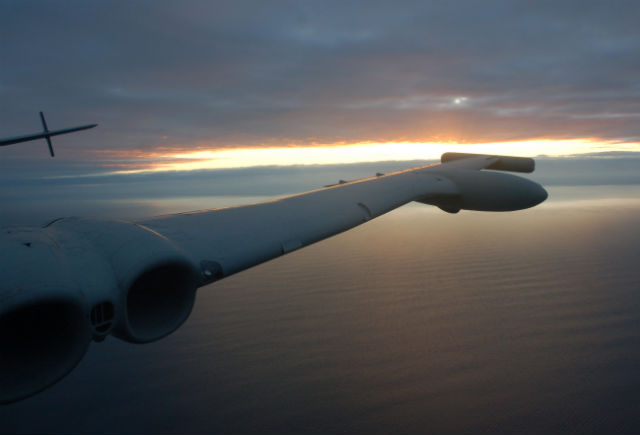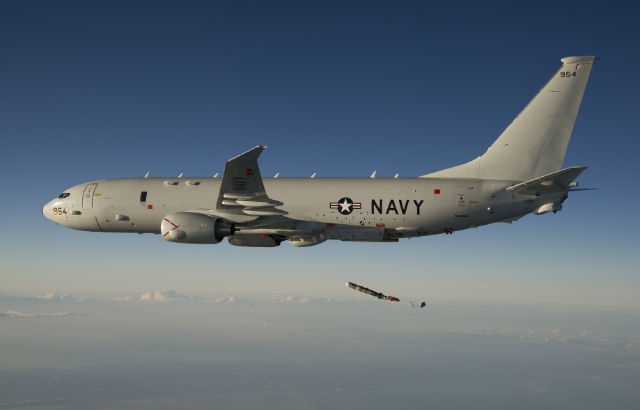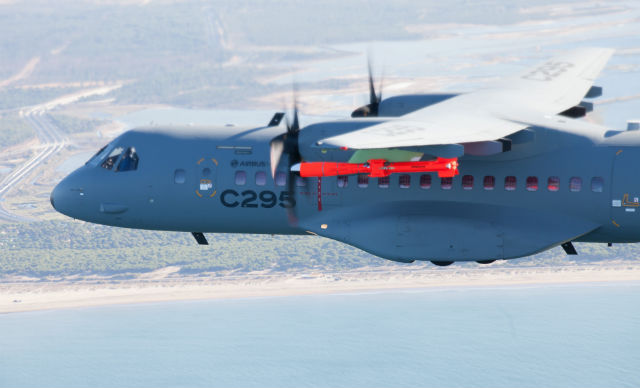Two years ago, UK Prime Minister David Cameron cancelled the Royal Air Force's BAE Systems Nimrod MRA4 programme, eliminating the service's future maritime patrol aircraft (MPA) fleet at a budget-cutting stroke. Three months later, and after an investment of more than £4 billion ($6.4 billion), the long-delayed type went for scrap, only one year before it had been due to finally begin entering use.
 |
|---|
AirTeamImages The RAF had been due to introduce nine Nimrod MRA4 surveillance aircraft |
Subsequently described by Ministry of Defence officials as the most difficult decision of the Strategic Defence and Security Review (SDSR), the cancellation removed a persistent wide-area surveillance capability which continues to be viewed by many as much more than a "nice to have".
The question of whether the UK can continue to get by without dedicated maritime patrol assets was assessed by the House of Commons Defence Committee, which published its Future Maritime Surveillance report on 19 September. Including an assessment of a 2011 study which looked at possible options for reinstating the capability, which has lapsed since the March 2010 retirement of the RAF's previous Nimrod MR2s, the document makes uncomfortable reading for the coalition government.
 |
|---|
Craig Hoyle/Flightglobal Kinloss-based Nimrod MR2 operations came to an end in March 2010 |
Giving evidence to the committee in May, then-armed forces minister Nick Harvey said: "On maritime patrol surveillance we believe we are carrying an acceptable degree of risk in the short to medium term, but we have not, as yet, taken a view that we would not want to come back into this in the slightly longer term."
An MoD strategy to use other aircraft or maritime assets for tasks including anti-submarine warfare and long-range search "has proved adequate to the task and has not put an intolerable strain upon it," he added.
Challenging this view, the committee says: "The MoD asserts that it has robust risk assessment and management procedures in place to spot any risk escalation in the maritime surveillance arena, but we remain unconvinced it has the capacity to respond to any sudden escalation. We believe the risk is likely to worsen in the medium term as further maritime surveillance capabilities are withdrawn or not yet filled. The UK's maritime flank is likely to be increasingly exposed: this risk must be kept under close and continuous review."
Last year's study into aircraft options and the alternative use of systems, including unmanned air vehicles and satellites, concluded that a manned type such as the Airbus Military C295 or Boeing 737-based P-8A would provide the best method of reinstating a maritime surveillance capability. However, with defence minister Philip Hammond having left any such acquisition outside his procurement plans for the next decade, and the matter likely to remain closed until the next SDSR process in 2015, the committee accuses the MoD of sending mixed messages.
 |
|---|
Greg Davis/US Navy Boeing's 737-based P-8A could deliver a high-end future capability to the UK |
"On one hand it says that there is no requirement for such an aircraft and that it is not funded or in the programme, but on the other hand it acknowledges that its absence is a risk and something may need to be done," the report says.
An initiative to retain aircrew skills - dubbed Project "Seedcorn" - will place 33 UK personnel with maritime patrol units in Australia, Canada, New Zealand and the USA in 2012, and represents an in-year financial commitment worth £3.2 million.
The Seedcorn effort will continue through 2019 under current plans, but both the committee and industry have questioned its sustainability. "Although the former Nimrod crews have been loaned to other nations to retain skills, after five years these assets will no longer be available," Airbus Military said in a written submission to the committee, also recommending that "an MPA capability is regenerated within this timescale."
 |
|---|
Airbus Military Airbus Military is promoting its maritime strike-capable C295 for any future UK programme |
Questioned about the challenge of fielding a new type, Air Vice Marshal Mark Green, the MoD's director, joint and air capability and transformation, says: "If we are talking about replacing a platform as complex as the Nimrod, that would be quite a long time. If you are looking at a maritime surveillance platform, arguably that is a less complex platform and it can be done relatively easily because they are, effectively, on-the-shelf purchasing."
Buying a high-end system such as the P-8A would be expensive, with the US Navy's latest order carrying a per-aircraft cost of about $170 million. For the same price, roughly four less-capable MPA-roled C295s could be acquired. Other options could include modifying the radar on the RAF's Raytheon Systems Sentinel R1 surveillance aircraft, or installing additional sensors on incoming assets such as the Airbus Military A400M and A330 Voyager tanker/transport. Saab also recently began promoting a "Swordfish" maritime patrol development of its 2000 regional turboprop.
Because of the scale of investment needed, the report recommends "work on the next SDSR should include a specific maritime surveillance work stream, involving all those, military and non-military, who make use of these assets".
Stung by the loss of the Nimrod force and its associated economic contribution to the area around RAF Kinloss, Scottish National Party defence spokesman Angus Robertson is particularly vocal about the loss of capability incurred by axing the MRA4.
 |
|---|
Rex Features |
A recent close pass near British territorial waters by the Russian navy's aircraft carrier Admiral Kuznetsov (above) highlighted the MPA gap, and exposed a "woeful lack of significant conventional vessels based in Scotland", he says. "As a maritime nation, Scotland requires appropriate MPA capability. If the UK government does not take this capability gap seriously, a Scottish government with defence decision-making powers certainly should."
Source: Flight International
















